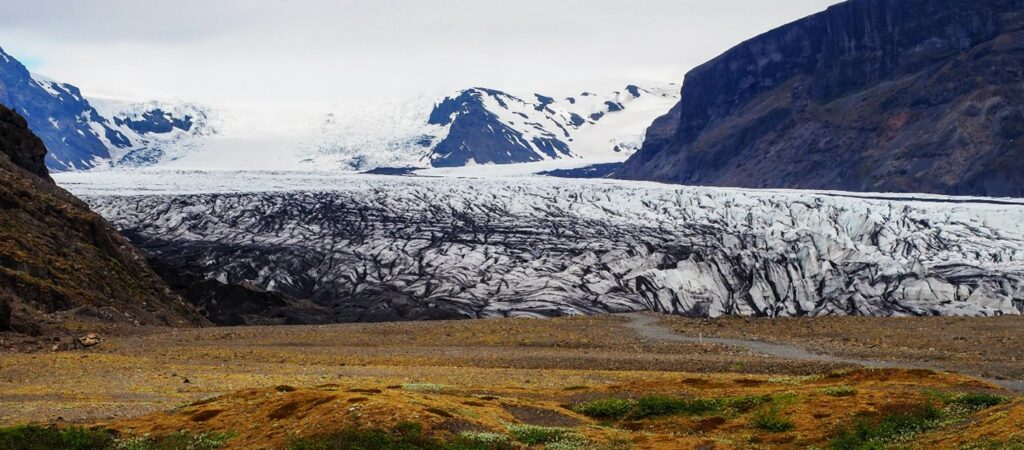Chapter 4 Glaciation
Learning Objectives
After reading this chapter, completing the exercises within it, and answering the questions at the end, you should be able to:
- Describe the timing and extent of the Earth’s past glaciations,
- Describe the important geological events that led up to the Pleistocene glaciations,
- Explain how Milankovitch orbital variations along with positive feedback mechanisms, have controlled the timing of those glaciations,
- Describe the differences between continental and alpine glaciation,
- Summarize how snow and ice accumulate above the equilibrium line and get converted to ice,
- Explain how basal sliding and internal flow facilitate the movement of ice from the upper part to the lower part of a glacier,
- Describe and identify the various landforms related to alpine glacial erosion, including U-shaped valleys, arêtes, cols, horns, hanging valleys, truncated spurs, drumlins, roches moutonées, glacial grooves and striae,
- Identify various types of glacial lakes, including tarns, finger lakes, moraine lakes and kettle lakes,
- Describe the nature, origins and importance of various types of glacial sediments, and
- Explain how anthropogenic climate change is affecting glaciers, and why that matters, and how glaciation contributes to Earth-system processes.

A glacier is a long-lasting (decades or more) body of ice on land, that is large enough (at least tens of metres thick and at least hundreds of metres in extent) to move under its own weight. About 10% of the Earth’s land surface is currently covered with glacial ice, and although the vast majority of that is in Antarctica and Greenland, there are many glaciers in other places. At various times during the past million years glacial ice has been much more extensive than it is now, with ice covering as much as 30% of the land surface.
Glaciers presently represent the largest repository of fresh water on the Earth (~69% of all fresh water), and they are highly sensitive to changes in climate. In the current warming climate glaciers everywhere are melting rapidly, and although some of the larger glacial masses will still last for centuries, many smaller glaciers, will be gone within decades, in some cases within years. That is much more than just a troubling thought for people that find glaciers fascinating and beautiful. Many people, around the world, rely on glacial ice for their water supplies, including drinking water and water to grow food. Changes to glaciers also have implications for mass wasting; that topic is covered in Chapter 5.
Media Attribution
Figure 4.0.1 Photo by Isaac Earle, 2016. Used with permission, CC BY 4.0
